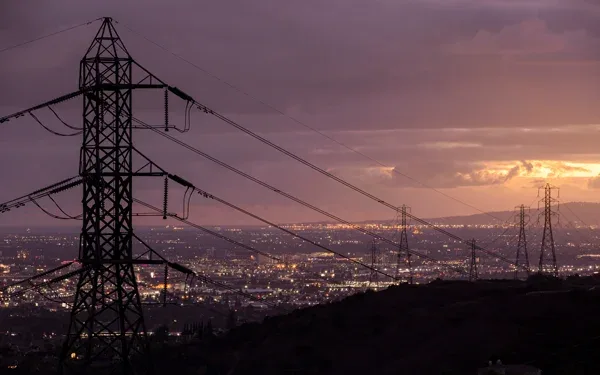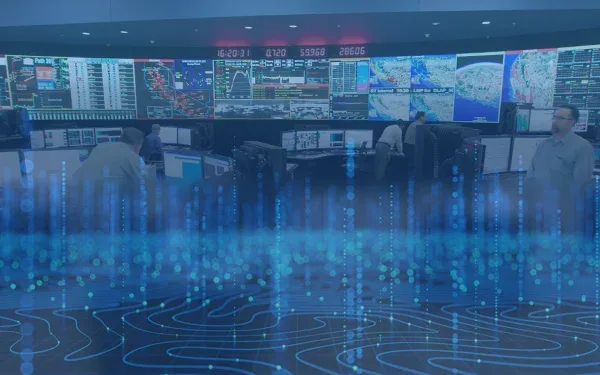Storage: An intersection between reliability today and climate goals of tomorrow

Summer months are particularly challenging for electrical grid operators in the West. Climate change, prolonged drought conditions and extreme heat events put a lot of stress on the system. But there is also a great positive story to tell this summer about the grid that the general public may not be aware of: California added a very large amount of capacity to the system, mostly new storage, and the resources are performing extremely well.
As older gas resources retire from our fleet, the ISO’s ability to serve peak load becomes increasingly challenging. At the same time, the state of California is advancing toward its statutory goal of generating electricity with zero greenhouse gas (GHG) emissions by 2045. Reaching that aggressive target will require a tremendous buildout of new renewables – think more than 50,000 megawatts (MW) of solar. Additionally, there will also be a need to store the generation from solar and wind resources for use during periods when the sun is not shining and the wind is not blowing.
Enter storage. Both problems are helped with storage because it addresses near-term reliability issues and also helps meet long-term GHG reduction goals by balancing supply and demand on a system increasingly comprised of mostly intermittent renewable generation.
The ISO had around 550 MW of storage on the system about a year ago, and today that number is a little more than 1,500 MW. By the end of the year, we anticipate that amount to double again, to about 3,000 MW. We expect to see similar levels of storage capacity added over the next several years as well. Today, nearly all of this capacity is lithium-ion, which, when fully charged, can discharge continuously for up to four hours.
No other grid in the country is adding battery storage at the rate of California. This is exciting, but at the same time challenging to grid operators who do not have experience managing a system that relies heavily on this technology. Storage is a unique asset in that it does not actually generate energy, but instead can allow grid operators to move energy from one time period to another. Operators must monitor the state of charge of the storage fleet and specific storage assets in local areas to ensure there is enough energy to meet peak load conditions. (State of charge is what it sounds like – the amount of power a battery contains before it has to be charged again).
The pace and volume of the storage capacity added requires our operations team to learn important lessons quickly to best inform real-time grid management in the future and additional tools we may need to develop to operate storage going forward. California grid operators are up to the task. This is similar to what they faced about 10 years ago when a large amount of new solar resources were interconnecting to the grid.
Despite a handful of operational glitches, overall performance of the storage fleet this summer is a success. From a grid operator’s perspective, we would ideally like to see storage resources charging during the middle of the day when there is the least strain on the system, and saving that energy for the evening peak ‘net-load’ periods when demands on the grid are the most challenging.
By design, this pattern matches with the economic incentives for storage resources. Prices are lowest during periods of the day with high amounts of solar generation and highest during the periods immediately after the sun sets. The financial incentives for storage resources align with the needs of the grid operator. This manifested in storage resources performing almost exactly as intended during the summer months, including some critical days when grid resources were strained.
Although managing physical storage resources is new to the ISO operations team—in fact, it is new to grid operators everywhere—many teams were involved in planning for the introduction of this technology. About five years ago, the ISO developed the market framework to accommodate a resource that could bid a positive and negative operating range and could be dispatched anywhere in that range. The model also included functionality to maintain state of charge values and charging efficiencies for the storage fleet, which are critical functions for integrating storage resources into the market.
Prior to this summer, a team at the ISO developed a mechanism to ensure that specific storage resources were sufficiently charged on very tight system days. Concurrently, the ISO is developing new modeling functionality for storage and renewable resources to be modeled as either hybrid resources or co-located resources, which is when we are getting power from facilities that pair storage with another source, usually solar. Development of other market features for storage and additional operation tools continue as the ISO learns more about how these resources actually perform and participate in the market.
Continued modeling improvements are important because most of the new storage capacity coming on-line is not operating as stand-alone storage. Instead, these resources are realizing synergies from locating at existing solar facilities or being built at the same location and time with new solar. This again creates challenges about how to best manage this new group of combined resources. Teams at the ISO will continue to think about how resources locate and group themselves and about the necessary market tools needed to make it all work.
How and where resources locate is not the only aspect of this new technology that is rapidly changing. Today, nearly all of the storage resources on the grid are four-hour lithium-ion batteries. As penetration of storage grows, managing the system will require that storage resources be of longer duration or that significantly more four-hour resources are built. In fact, the California Public Utilities Commission has already ordered the procurement of 1,000 MW of 8-hour (long duration) storage. If duration requirements increase, it is unlikely that lithium-ion technology will continue to dominate the technology for new resources being developed. New technologies will likely necessitate additional changes to the model, review for compensation and improvements to how the resources are handled by grid operators.
As the evolution of new technologies occurs, as it surely will, the ISO will continue to spend time thinking about what those new tools should be, a process that requires analysis, stakeholder engagement and working with state agencies to inform any outcome. As more storage is coming on-line all the time, it is our job to develop the market rules and capabilities so everything works together and the lights continue to stay on. And as I said earlier, ISO grid operators are up to the task.


